No Results Found
The page you requested could not be found. Try refining your search, or use the navigation above to locate the post.

Oyster expert Bill Walton builds a better bivalve mollusk.
By Derek Herscovici ’14
But oysters are fickle animals, requiring specific conditions to grow, harvest and ship them across the country. Fortunately, oyster farmers can rely on the expertise of Bill Walton, associate professor and extension specialist with the School of Fisheries, Aquaculture and Aquatic Sciences.
A self-professed “oyster geek,” in 2017 Walton and his doctoral student, Vicki Pruente, at the Auburn University Shellfish Lab on Dauphin Island (and a colleague at the FDA’s Seafood Safety Lab) received a grant of $456,646 from the USDA to study methods of understanding how regional farmers can affect the safety of harvested oysters to benefit not only growers, but consumers as well.
When the oysters are harvested from the water, the small bit of seawater still inside the shell — affectionately called “oyster liquor” — often contains trace amounts of vibrios. If the oysters are left in the sun too long, however, that bacteria can multiply into a potentially lethal quantity.
“The analogy I use is a glass of cold milk: how long would you leave that on the hood of your car in August before you decide ‘maybe I shouldn’t drink that?’” says Walton. “The ballpark number of people getting sick from Vibrio vulnificus from eating raw oysters is around 50 cases [a year], so it’s a low number. The scary part is, the mortality rate is about 50 percent.”
The best way to protect customers — and farmers — is to put the oysters on ice very quickly after harvesting, especially in the warmest parts of the summer. As long as the oysters stay cold, the bacteria are kept at bay, enabling them to be served raw at far-flung restaurants while meeting public health standards.
While getting and keeping oysters cold is an industry standard, new methods of oyster farming (called ‘off-bottom’ oyster farming – see sidebar) presented new challenges. One of those challenges is that farmers need to pull the oysters out of the water for sorting and inspection, increasing the risk of vibrio numbers going up. In the past, pulling oysters out meant putting them back in the water for sometimes a month or more, potentially mucking up the product with barnacles and decreasing its value. Thanks to Walton and his team, those long waits are a thing of the past.
“I’m really happy to say, we did some research that got some wait times down to two weeks and some down to one week,” says Walton. “We proved that within one week, there was no elevated risk of vibrio for those.”
Oysters are more than a job for Walton. His wife, Beth, works for the 501(C)(3) non-profit Oyster South, which supports oyster growers, shellfish dealers, and world-class chefs like Auburn alums David Bancroft of Acre and Rob McDaniel ’02 of Springhouse.
But since Walton’s arrival in Dauphin Island, farmers switched to the “off-bottom farming” technique where the oysters are suspended in baskets or mesh bags in the middle of the water.
Aquaculture farmers buy oyster “seed” from commercial hatcheries to plant in their baskets or bags, then float or suspend them in the water until they’re ready for harvest.
Not only does off-bottom farming create a prettier, cleaner product, but it allows for more oysters to be grown in the same area.
“In 2009 we had no off-bottom oyster farms in the gulf,” said Walton. “Since 2019, we now have it approved in all 5 Gulf states and it’s happening in 4 already.” Oyster South raises funds to donate to industry members, helps educate the growing industry and connects the industry from North Carolina to Florida to Texas.
Walton takes it a step further, though. Through his raw bar catering company, The Wandering Oyster, he and his friends can introduce people to the different varieties of oysters grown in the area. As much for fun as it is for business, working the Wandering Oyster lets Walton hear consumer feedback.
“Generally, we get the ‘wow factor’ — people can’t believe that these amazing oysters are coming out of their local waters. They’re usually thrilled about it,” says Walton. “It is kind of rewarding, actually, to just pop open some oysters and just get to see people enjoying them like that.”
The page you requested could not be found. Try refining your search, or use the navigation above to locate the post.
The page you requested could not be found. Try refining your search, or use the navigation above to locate the post.
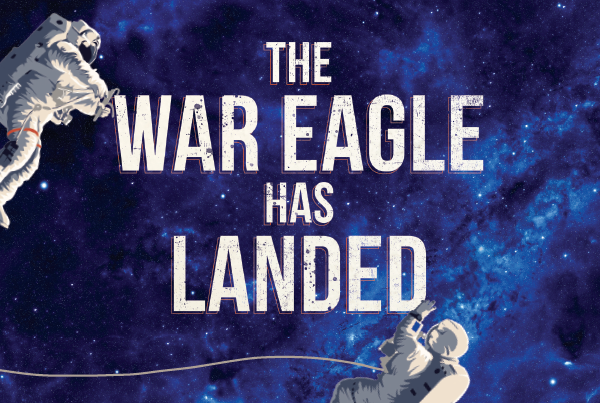
For more than 50 years, Auburn grads have helped turn America’s wanderlust for space travel into a reality. With a new mission to return to the moon and explore Mars, hundreds of Auburn Tigers find themselves the architects of humankind’s next adventure in the Big Blue.
By Alec Harvey ’84

“That was the very beginning of the space program,” says Mike Ogles, Auburn’s director of NASA programs. “I mean, that’s when we landed on the moon. That was the start of it.”
It didn’t end there. From astronauts (including Ken Mattingly ’58 and Hank Hartsfield ’54, alumni who flew an all-Auburn shuttle mission together in 1982) to engineers and researchers and others, people from the Loveliest Village have been instrumental in exploring the cosmos.
And now, with President Donald Trump calling for a return to the moon by 2024, Auburn is again on the frontlines of space exploration, helping to lead a resurgence of space interest. Auburn alumni working in the space industry say we’re close to putting men and women back on the moon — and after that, we have our sights set on Mars.
Auburn and NASA
Doug Loverro ’89, who earned a master’s in political science at Auburn, is NASA’s associate administrator for the Human Exploration and Operation Missions Directorate. It’s a mouthful of a title, but he has a pretty straightforward mission: he’s in charge of getting humans back to the moon.
“The president has asked us to go back to the moon in the next four and a half years, and we’re charged with how we’re going to do that,” says Loverro, who took the job at the end of 2019 after a distinguished Department of Defense career that included five years as assistant secretary of defense for space policy. “It’s an incredible opportunity.”
Todd May ’90, whose 25-year NASA career included working on the International Space Station project and running the Space Launch System, says NASA’s focus is back to what it was in the Apollo years.
There’s no doubt that Auburn University has an untold number of graduates involved in the space program. We talked to just a few of them for this story:

“Before I even got out of high school, we had kind of halted deep-space exploration,” says May, who was director of the Marshall Space Flight Center and now works for a private company in Huntsville. “We dipped our toe into deep space with the Apollo program, and then we stopped. We decided to build the shuttle instead and establish a permanent presence in space in low-Earth orbit. For the last 30 years or so, that’s been a major focus.”
Two other Auburn NASA connections are Suzan Voss ’71, who is wrapping up a 35-year career with the agency, and Amy Jager ’05, who has been a contract employee for the past seven years.
“It’s exciting to be involved in these programs where you’re launching crew, science and cargo to space, and, of course, safely returning them to Earth,” says Voss, a mathematics major and a member of Auburn’s College of Sciences and Mathematics Leadership Council.
“I really loved the shuttle, but I like the space station even more. It’s great to work with international partners, and the station has gotten to a point where their focus is on science, technology and discoveries in low-Earth orbit.”
Now, a focus at NASA is on the lunar Gateway, which will be a small spaceship — including living quarters, labs and more —that will orbit around the moon and provide access to the moon’s surface.
Jager is working on that project as a contractor with Aerospace Corporation.
“We’re basically looking to establish a lunar orbiting outpost around the moon,” says Jager, who works at the Kennedy Space Center in Florida on the logistics module of the Gateway. “Pieces of it will be launched and it will be assembled there.”
Astronauts Ken Mattingly (front) and Hank Hartsfield on their way to Launch Pad 39A on May 29, 1982 for a rehearsal of their liftoff.
Blue Origin and Others
“That’s when NASA first decided to do something in a different way,” says Jim Voss ’72, who spent 202 days in space on both shuttle missions and on the International Space Station. “They said, ‘Build us a cargo vehicle, meet these requirements and do it safely, and when you’re done, if it works, we’ll buy your services.’”
Some of these companies have already launched satellites into space, while others have bigger plans, such as developing vehicles that can carry humans into space.
Loverro says these groups are partners with NASA, not competitors.
“When I was growing up, we viewed companies like Lockheed and Martin Marietta and Northrop as these big industrial giants that the government turned to do things, and we forget that their roots were exactly the same as the Blue Origins and the SpaceXes,” he says. “If Elon Musk is not an exact facsimile of Howard Hughes, just 60 or 70 years removed, I don’t know who is.”
Another major player is Bezos, founder of Amazon. His Blue Origin, like Musk’s SpaceX, is working on prototypes for new spacecraft.
Tim Monk ’05, who graduated from Auburn with Jager, is a senior manager at Blue Origin working on the company’s New Glenn project, which the company calls a “heavy-lift launch vehicle capable of carrying people and payloads routinely to Earth orbit and beyond.”
“In a nutshell, what Jeff has given Blue Origin to accomplish is to get humanity to the point where millions of people are living and working in space,” Monk says.
The goal is to fly the New Glenn by the end of next year, but first comes Blue Origin’s New Shepherd, which plans to fly astronauts this year, Monk says.
All of it is good for the space industry, Loverro says.
“Every time that Elon Musk excites the American public about space, we get more applications at NASA. Every time Jeff Bezos excites the American public about space, we get more people who want to join us on that journey.”
One Auburn grad is trying to excite people on the other side of the world. Jonathan Mitchell ’13, a New Zealand native, has returned to his home country to work for the New Zealand Space Agency, part of the country’s Ministry of Business, Innovation and Employment.
“The NZSA is heavily focused on the commercial aspects of space and in promoting, enabling and growing our domestic sector,” he says. “What I’ve particularly enjoyed is seeing just how much space activity is happening in New Zealand and getting to interact with and hear from some really smart, driven people who are collectively building a cutting-edge industry with real-world impacts for New Zealand.”
All of this points to what May refers to as a “sea change” in the space industry.
“It’s very clear that space isn’t just for NASA and the American government,” he says. “It has become much more democratized. I think there are over 100 companies now either developing or flying rockets around the world. The next Americans to launch from American soil will launch from a commercially driven development. The government is still involved, but it’s a completely different way of doing it.
“What we see going forward is that NASA wants to explore, and we want to go back into deep space, but we don’t want to do it alone,” he adds. “We want countries and companies to come with us. We want a viable commercial industry to develop, and we want America to lead. NASA’s role has become one of enabling that market to grow.”
In my personal world, I would want us to get on with it and go on to Mars, but I’m not the one who has to make the decisions that might involve risk to life, either.
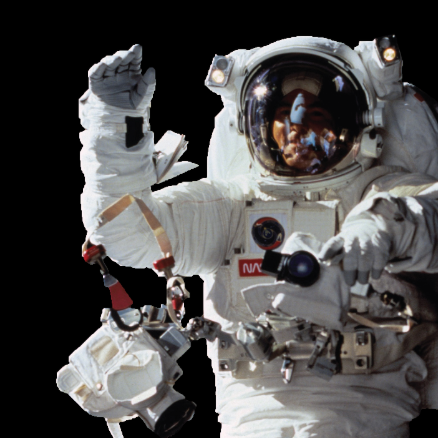
To the Moon and Beyond
After a number of decades, NASA has set its sights on deepspace travel again, and Auburn’s space contingent is all for it.
“By abandoning the Apollo program, we lost the ability to get humans into deep space, and by abandoning the shuttle, we lost the ability to put humans in space at all,” May says. “Now I’d say we have started back, and our goal in deep-space exploration is to go and stay.”
Loverro says further space exploration is directly linked to getting men and women back on the moon.
“After that, what are we going to do?” he asks. “We get to envision how we are going to sustain our presence on the moon and then, more importantly, how we’re going to extend human existence to Mars.”
Voss, who teaches at the University of Colorado, says the 2024 goal is “physically impossible,” but it might happen “relatively soon after that.”
“We’ll eventually get back to the moon, and even farther out,” Voss says. “I really do believe we’ll get to Mars. NASA has to take the conservative approach, which is going back to the moon and learning some things we need to learn for deep-space exploration. We have a better chance of solving problems if they’re closer. In my personal world, I would want us to get on with it and go on to Mars, but I’m not the one who has to make the decisions that might involve risk to life, either; I think I’ll see us land on the moon again, but Mars is probably 30 to 40 years away.”
May agrees that 2024 is probably not realistic for getting back to the moon, and he says what we need to do goes far beyond just landing there. He discussed that very point with one of a dozen people to know about landing there firsthand.
Jim Voss ’72, Expedition Two flight engineer, prepares to exercise on the cycle ergometer in the Zvezda Service Module on March 23, 2001. “I had breakfast with Buzz Aldrin in Naples, Italy, one morning and I was able to ask him if it was a moral victory if we go back to the moon,” May says. “He said, and this is one of 12 guys who can say it, ‘I’ve been there, and planting a flag is all fine, but what do you do after that?’ His point was that you don’t go to just plant a flag or just for the glory. You go to settle. At the end of the day, altruistic reasons are not the only reasons to go. In order for it to be sustainable, it needs to have some sort of business there.”
For Loverro, his job at NASA couldn’t be more exciting as the space agency and other companies, many of them with Auburn graduates working there, set their sights on the stars.
“It’s all unplowed ground,” Loverro says. “There’s nothing we have today that will get us there. Everything will be something my team conceives of, test out, do the research on or build. We get to do the most fun thing in the universe, which is to explore it.”
From corralling cows to locating your luggage, Auburn’s RFID Lab is helping companies and people track their most valued possessions.
From rolling trees with toilet paper to jumping in fountains on Leap Day, the history surrounding some of Auburn’s most beloved traditions may surprise you.
Combining faith and design, disaster response architect Sarah Elizabeth Dunn ’03 builds shelters for disaster-stricken communities around the world.
From corralling cows to locating your luggage, Auburn’s RFID Lab is helping companies and people track their most valued possessions.
From rolling trees with toilet paper to jumping in fountains on Leap Day, the history surrounding some of Auburn’s most beloved traditions may surprise you.
Combining faith and design, disaster response architect Sarah Elizabeth Dunn ’03 builds shelters for disaster-stricken communities around the world.
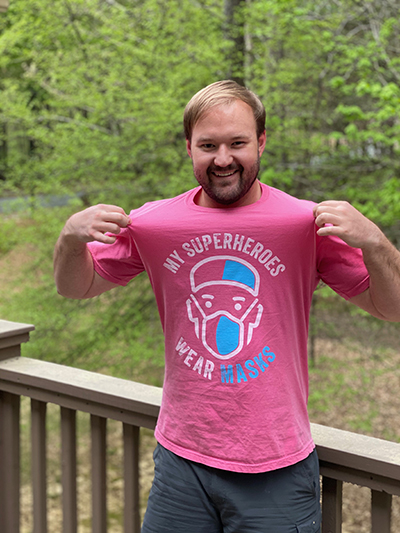
When the Pandemic shut down their biggest moneymaker, a family-owned business lended a hand.
By Derek Herscovici ’14

At sports car racing events around the country, you can usually find them just off the track, in the trackside vendor village or near the paddock. Offering a wide range of official custom t-shirts, hats and souvenirs chosen from over 3,000 manufacturers, Craton Promotions has quickly become a leader in sports car racing and event merchandising.
But when COVID-19 took the races off the road, they needed a solution to keep business afloat. The “Our Hidden Heroes” campaign was born to help medical first-responders working the frontlines, while helping business until the races return.
We spoke to Thomas Craton ’14, vice president of Craton Promotions, about how a business detour turned into a charitable success story that provided relief during this time of crisis.
Did you know you wanted to work as an entrepreneur before coming to Auburn?
When I first came to Auburn, my plan was to graduate with a mechanical engineering degree and work in the sports car racing industry. My dad had a very successful promotional products and event merchandise business for 25 years before retiring. During that time, I grew up going to the races and other sporting events across the country with him. I remember from an early age going to Road Atlanta and seeing the LMP1 cars, and falling in love with the looks and sounds of those cars from the early 2000’s. Since then I’ve been a “Gearhead.”
What made you want to study in family-owned business while at Auburn? What are the benefits and challenges of small businesses?
The responsibilities are more and the pay less, but the long-term advantages far outweigh working for someone else. When you work in a family owned business, succession is a big part of what you want to invest in for the future.
The benefits with a family owned business [is what] you start with — in my case my Dad (CEO Charles Craton). He has been an entrepreneur and was self-employed before I was even born. What he’s taught me the most is “what not to do;” he’s experienced almost every type of customer and challenge in the business world, and has taught me how to navigate through them. The biggest challenge I’ve faced is, when I bring new ideas to the table, it’s hard to break the “well this is how I’ve done it for all these years”
How was Craton Promotions affected by the COVID-19 Pandemic?
Our company was devastated by the COVID-19 pandemic because our main source of revenue is created in large public gatherings at major racing events. Two days before our largest event of the year, SUPERSEBRING in Sebring, FL, [President Trump] shut down international travel; two days later, the race was cancelled. We have pivoted to online sales only, and have managed to create a new path forward in the short-term [while] also finding a way to give back to our community.
How did you come up with the idea “My Superheroes Wear Masks?”
While we have been quarantined at home and in our office, our medical community has been going towards people suffering from the coronavirus, and we all know what a heroic effort they have made for us, many giving their lives to help combat this epidemic. How could we use our infrastructure to make some difference while we were in this horrible situation?
What is the goal behind the initiative, and why did you choose to raise money for the CDC Foundation ‘All of Us Combat Coronavirus Campaign?’
Our goal is twofold: to thank our men and women who are facing this terrible virus head on every day in the medical field, they’re the unsung heroes of this. The second is to raise money for the CDC’s Foundation All of Us Combat Coronavirus campaign. We were looking for a charitable organization that would provide PPE (Personal Protective Equipment) directly and quickly to the medical community. The CDC Foundation provided that outlet and welcomed our help in raising funds.
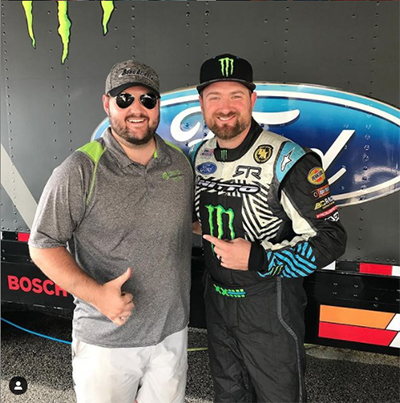
We’ve sold over 1,000 shirts and generated over $5,000 to this effort. Our local TV station here in Atlanta did a news story on our efforts [and] our community of Peachtree Corners, Ga. has helped promote our efforts and given us tremendous support on social media. I was interviewed by our local government and we have had tremendous support from large influencers on social media from Twitter to Instagram, which has reached thousands of people.
How did you first start working with NASCAR and sports racing events?
Our history was important to winning our accounts in the beginning. My Dad worked with the American Les Mans Series race series that was formed back in 1999, and Craton Promotions worked with them for many years. When I graduated from Auburn and my Dad and I set the business back up, he reacquainted us with Road Atlanta; from there we have grown to encapsulate all of NASCAR’s sport car division called International Motor Sports Association (IMSA). IMSA runs several sports car racing series, like the WeatherTech Sports Car Championship Series, the Michelin Pilot Challenge and several others. IMSA also owns and runs two racetracks: Michelin Raceway Road Atlanta and Sebring International Raceway [in Sebring, Fla.]. We produce and develop souvenir merchandise for both racetracks, their major events like Petit Le Mans and the 12 Hours of Sebring, as well as track merchandise. For IMSA, we travel around the country to manage trackside stores for IMSA and the race series they run at each race.
Our primary focus is developing a line of products — apparel and souvenir items — that following current retail trends. We provide a wide offering of products from very simple, minimalistic designs to very art-heavy designs. Our company infrastructure allows us to travel and set up “pop-up” stores in large tents, as well as a merchandise trailer we travel with to sell directly to the fans.
What was the first race or event you worked? The most recent?
The first race I “worked” was The Big Kahuna when I was in elementary school. It was a motorcycle race at Road Atlanta. I don’t know how much work I actually did, as I just helped move inventory with my dad on the golf cart. The most recent event I worked was the Rolex 24 at Daytona International Speedway in January 2020.
What are your favorite memories of working those racing events?
My favorite memory so far happened last year; while a race was going on at one of our larger events, two executives in the racing world sat down with my dad and I and just let loose. For those 15-20 minutes, I don’t think I’ve ever laughed so hard, and realized that we’ve finally broken the customer/vendor relationship and became friends. They trusted us enough to tell us their true feelings on everything going on in the racing world.
As states begin to reopen and sports / racing start back again, how do you plan for Craton Promotions to return?
Since Covid-19 became a national pandemic, we’ve had to change up our entire strategy on how we sell to fans of sports car racing. Our traditional venues selling directly to the fans at racing was cancelled until the late summer.
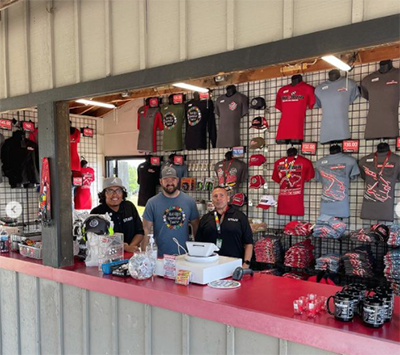
We had to change our fan “shopping experience” from in person to online. We have successfully been able to do that for this interim period, and are excited to know that we are going to be able to survive and get past this.
What’s next for Craton Promotions?
We have learned an enormous amount about the power of social media in our culture today. That has been a wake-up call to us — that the tools we were using were never utilized to their fullest extent and capability, and we have addressed that in a positive way to move forward in uncertain times to find a sustainable revenue stream. I am excited for the future.
Bret Holmes navigates the twists and turns of the racing world as a driver and an owner.
Stephanie Todd ’04 keeps your financial secrets safe at one of the world’s largest banks.
Combining faith and design, disaster response architect Sarah Elizabeth Dunn ’03 builds shelters for disaster-stricken communities around the world.
Bret Holmes navigates the twists and turns of the racing world as a driver and an owner.
Stephanie Todd ’04 keeps your financial secrets safe at one of the world’s largest banks.
Combining faith and design, disaster response architect Sarah Elizabeth Dunn ’03 builds shelters for disaster-stricken communities around the world.

The College of Human Science’s Sustainability in Action trip leaves a mark on you.
By Jeremy Henderson ’04
It was typical June night on Vorovoro, and she and the other 16 students who visited this past summer are in their sulus, gathered around Tui Mali on the floor of the great grand bure that Auburn and Bridge the Gap rebuilt in 2017. Their hearts are full, their tongues numb from kava, and they realize that Tui Mali — the chief of the Mali tribe! — is inviting them to watch the biggest rugby match of the year on the tiny solar-powered TV in his tiny house on his 200-acre island. It’s a big deal.
So they stay up until 2 a.m., head off past the water catchment system, bucket showers, medicinal garden and odorless composting toilets, and barefoot it over ferns and fronds and 3,000-year-old pottery fragments through the Fijian jungle to sit on a concrete floor with Tui Mali and his nephew, Bogi, and watch the boys who sing “Eda sa Qaqa” beat the U.S. for the championship. The amazing sun rises, and they parade back across paradise to their tiny tin-roof dorm, crawl into their mosquito-net beds and pinch themselves. The next night, they march into the grand bure waving tiny Fijian flags and singing “Eda sa Qaqa.”
Tui Mali always smiles. He smiled while granting them permission to stay during the sevu sevu. He smiled when they tried their first coconut shell of kava, and he smiled when they finally learned the moves to the meke. But Hailey had never seen him smile like that. Hailey’s a global studies major. She’s considering the Peace Corps, so the six credits’ worth of realworld lessons in natural resource management and permaculture and everything were amazing. But the smile — that’s what she’ll remember forever.
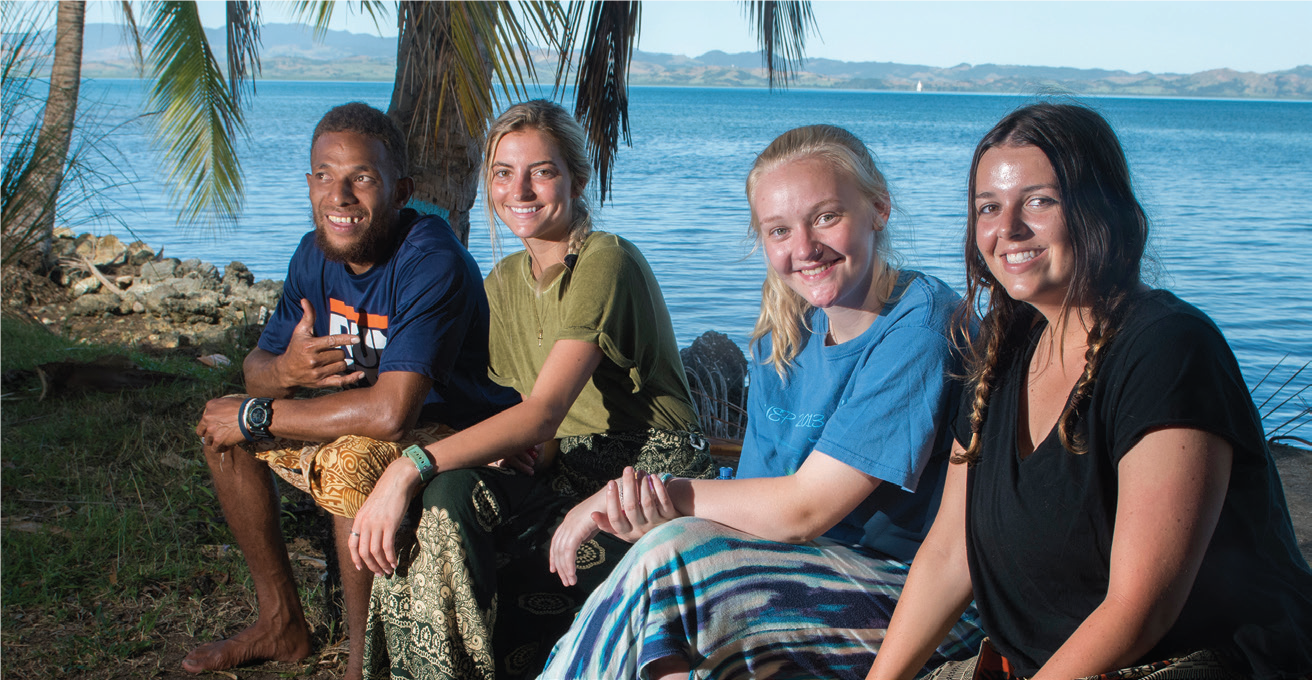
“We were just living this totally different life,” she says of her first trip. “It helped me learn to communicate with people from The College of Human Science’s Sustainability in Action trip leaves a mark on you very different cultures.”
That’s the most valuable thing she left with, she says — the skills to navigate social nuance 7,000 miles from Sky Bar. Like knowing not to show the tattoo to her homestay family when, like her friend Laura Vinzant ’19, she returned to Vorovoro a year later to help facilitate the 2019 Auburn trip as a Bridge the Gap intern. (The modesty-minded Mali can’t do much about the bikini-clad tourists who occasionally anchor illegally off the coast, but when Tui Mali adopts you as a daughter, it’s time to cover up.)
It’s not that she didn’t want to. You wind up closer to the folks you’re with during the “first-hand look into authentic island life,” as the Sustainability in Action website calls it, than anyone else you meet in Fiji. Three days in a Mali village, living with people who have hardly anything and still want to give it all to you? Vinzant’s host family had one bed. It was a pad. She got it.
It went the same for Turner. She spent her first night cuddled up with four kids on the home’s single mattress, waiting out a storm with…well, she doesn’t remember their names. To her, they’re still just Mom and Dad. And she couldn’t disappoint Mom and Dad.
“Mine is on my ribs,” she says. “I was like, ‘no, I can’t show you!’ But I’d just point to Laura’s arm because it’s the same tattoo.”
Vuvale — Fijian for family, literally “my home is your home.”
Sibley Barnette ‘18, a natural resources management graduate, and went to fight climate change on the shrinking shores of an island with no water source. But the four-inch outline of Vorovoro on her side isn’t a tribute to the environment—it’s an attempt to explain the experience, the sense of belonging.
At first, she’d planned to go with something about family, too. It seemed right. After three trips — one as a student, two as a Bridge the Gap intern — the place felt like home.
In the end, she kept the design but changed the words. There was just something in Tui Mali’s voice that one time, something in his eyes as he looked around at the eager young Americans working side by side with his people. It wasn’t a statement—it was a question.
“Rawa Va Cava?” — How can it be?
It was August 2010. Kate Thornton ’07, director of global education in Auburn University’s College of Human Sciences, needed a break from her dissertation. She turned on the BBC. There it was. “Paradise or Bust” was a five-part reality show about two British entrepreneurs who, in 2006, transplanted an online “tribe” onto a practically deserted island to establish what they claimed would be the most unique ecotourism experience in the world.
There would be buildings! There would be publicity!
Tui Mali said yes.
So did Thornton.
“I promised myself that if I ever finished the paper, I’d go there,” she says.
Four months later, she booked one of the last vacations to Vorovoro via Tribewanted.com. She was in love.
“A year later, I was a new member of the team in the College of Human Sciences and had an opportunity to write a grant for a new study abroad program,” Thornton says. “I was just like, ‘I have to take students back to that place.’”
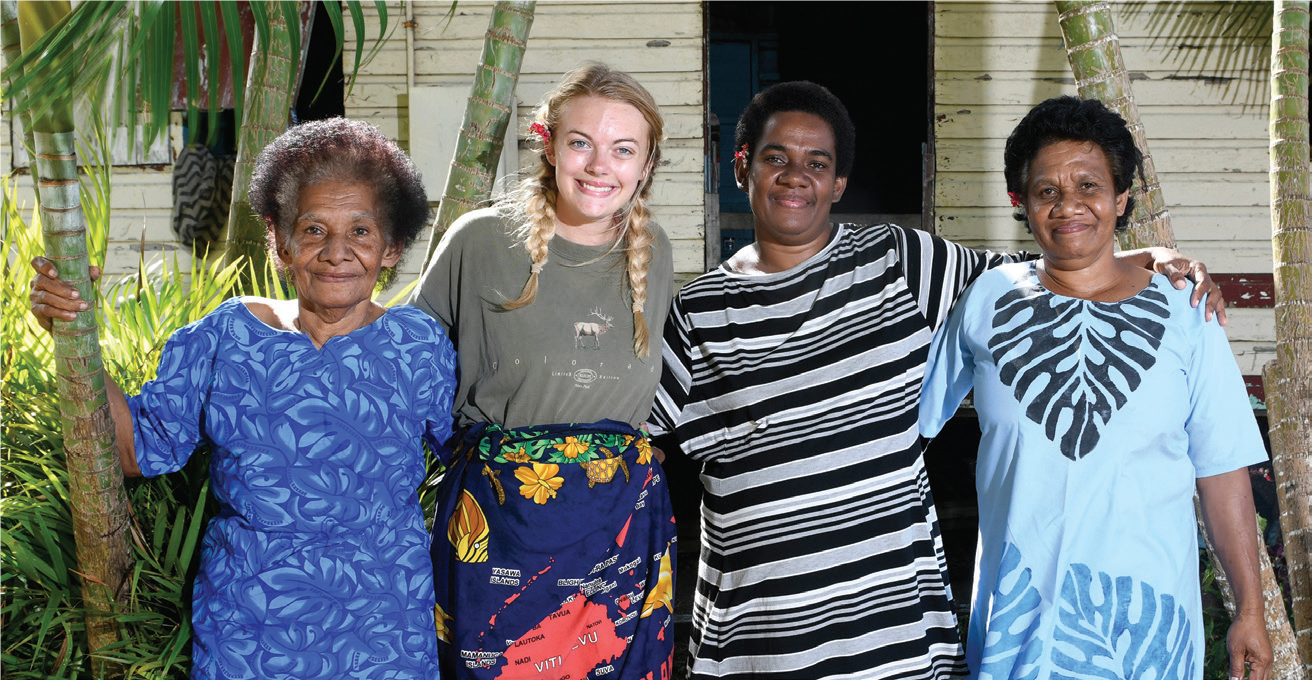
In 2009, Jenny Cahill’s family needed a vacation. She’d read about Tribewanted in one of the dozens of stories on the charming start-up experiment. It seemed perfect. She logged on, signed up for a month and wound up staying for 12, the company’s founder convincing her and her ex-husband to take over island operations for what turned out to be Tribewanted’s fourth and final year on Vorovoro. The work was fantastic. Until it wasn’t.
Bookings dried up. Buildings buckled. The Cahills and Tui Mali occasionally shared Vorovoro with just one or two backpackers for weeks at a time. Bad for business. Great for bonding.
“We fell in love with the [Mali] community,” Cahill says from her Indianapolis home, in between calls with marketing intern Natalie Jaroch, an Auburn global studies junior who took the Sustainability in Action trip last summer. “We thought we could use our relationships to create a visitor experience that was something truly sustainable.”
Exchange instead of escape. Partnership rather than ownership. Precious water. Precious jobs.
“That,” she says of the labor of love she began in 2012, “is the idea behind Bridge the Gap.” And, yes, “absolutely,” she says as director—without Auburn and Kate Thornton, the gap wouldn’t be bridged.
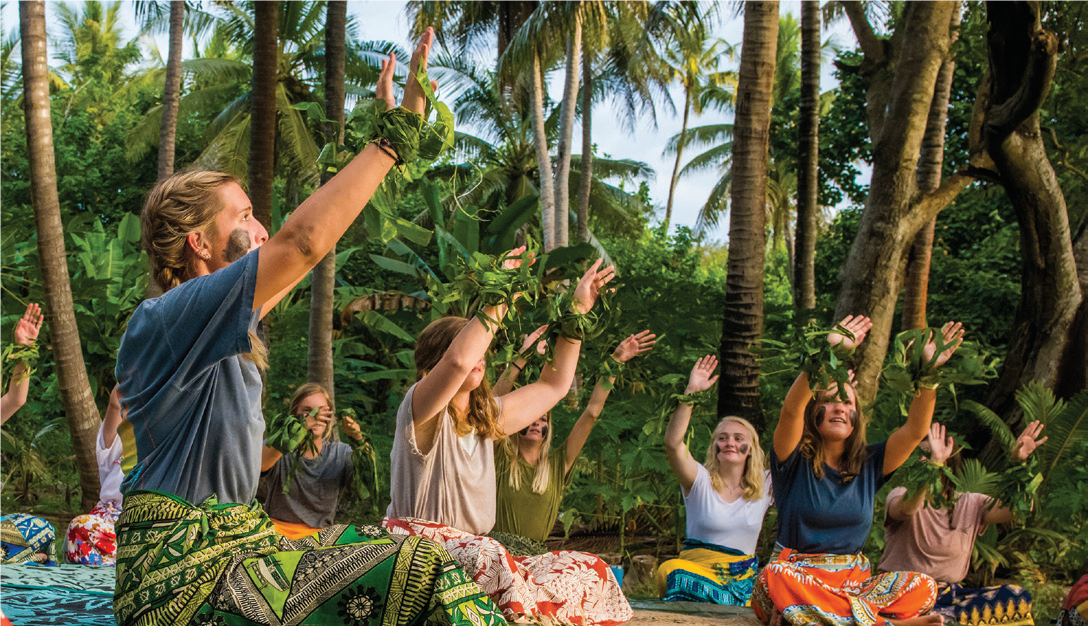
“We’ve essentially built this model,” Thornton says. “Some of the Fijians we work with don’t have high school educations, but they’re sharing their expertise and knowledge with American college students, which puts them in a place of honor instead of service.”
On Vorovoro, students don’t just learn about a different culture—by their very presence, they literally help preserve it.
Currently, the Fijian government strongly encourages tribal chiefs interested in maintaining autonomy on their land to demonstrate “development,” which typically involves names like Hilton and Marriott. But by virtue of Auburn’s educational initiatives, sustainability studies and collaborative community improvement projects, Vorovoro — to the delight of Melanesian archaeologists, who in 2010 proclaimed it the oldest inhabited piece of the Fijian archipelago — now legally qualifies as a cultural center (i.e., a development).
Through Bridge the Gap, Auburn is protecting the Mali tribe’s past by providing its members opportunities to improve their future. And now Auburn is showing other universities how to do the same.
After eight exclusive years with Auburn, Bridge the Gap and tribe members are facilitating similar programs with Arizona State University and Purdue University.
“I never would have been able to reach out to these other schools,” Cahill says, “without working with Auburn.”
Tui Mali nods, just as appreciative.
“When [Tribewanted] was here, it happened so quick, I thought maybe another one can come,” he says. “There were buildings, but all going down. When Auburn University come, they start building up.” “That,” he says, pointing toward his beloved grand bure, smiling, “is from Auburn.”
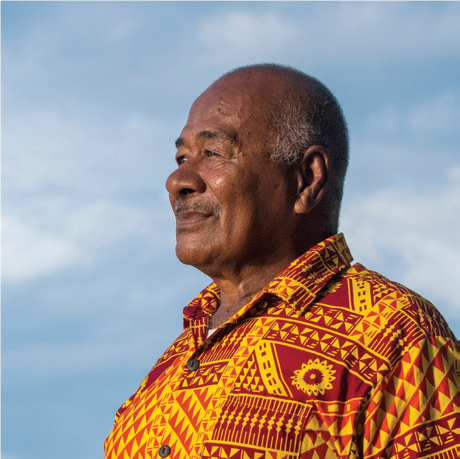
Sometimes the numbers don’t add up until the last day, during the goodbye song, or as everyone bawls as Bogi stands on the bow in his Fiji rugby shirt and leads a “War Eagle”, while little waving kids run after the boats along the shore. A few hours later, they’re at the five-star Fiji Marriott Resort Momi Bay for their first hot shower in forever. And everyone hates it.
They’re wasting water. They’re only watching the meke. They’re ordering kava from a menu.
The Sustainability in Action website calls it examining “the wealth of tourists versus the life of an average Fijian,” and it’s awful.
“(The resort) is in Nandi, where all the tourists go, and where there are lines people don’t really cross,” says Emily Strobaugh ’18, who graduated with degrees in global studies and English literature. Strobaugh went on the Sustainability in Action trip and interned at Cegu Valley Farms in 2017. “Native Fijians there are discouraged from talking to tourists…it was just so strange. I was like, ‘I don’t want to be here.’”
That’s when it sinks in. It’s not some kum ba yah cliché—on Vorovoro, it’s the solution to everything: 1 + 1 = 1.
Emily prefers it in Fijian: Dua Kei Na Dua Sa Dua. She got Tui Mali to write it down for her. She wanted it in his handwriting.
She didn’t wait till she got back to the states. On the day between the end of the study abroad and the start of her internship, she took the piece of paper to downtown Labasa, pointed to the back of her neck and told the tattoo artist “just like that.”
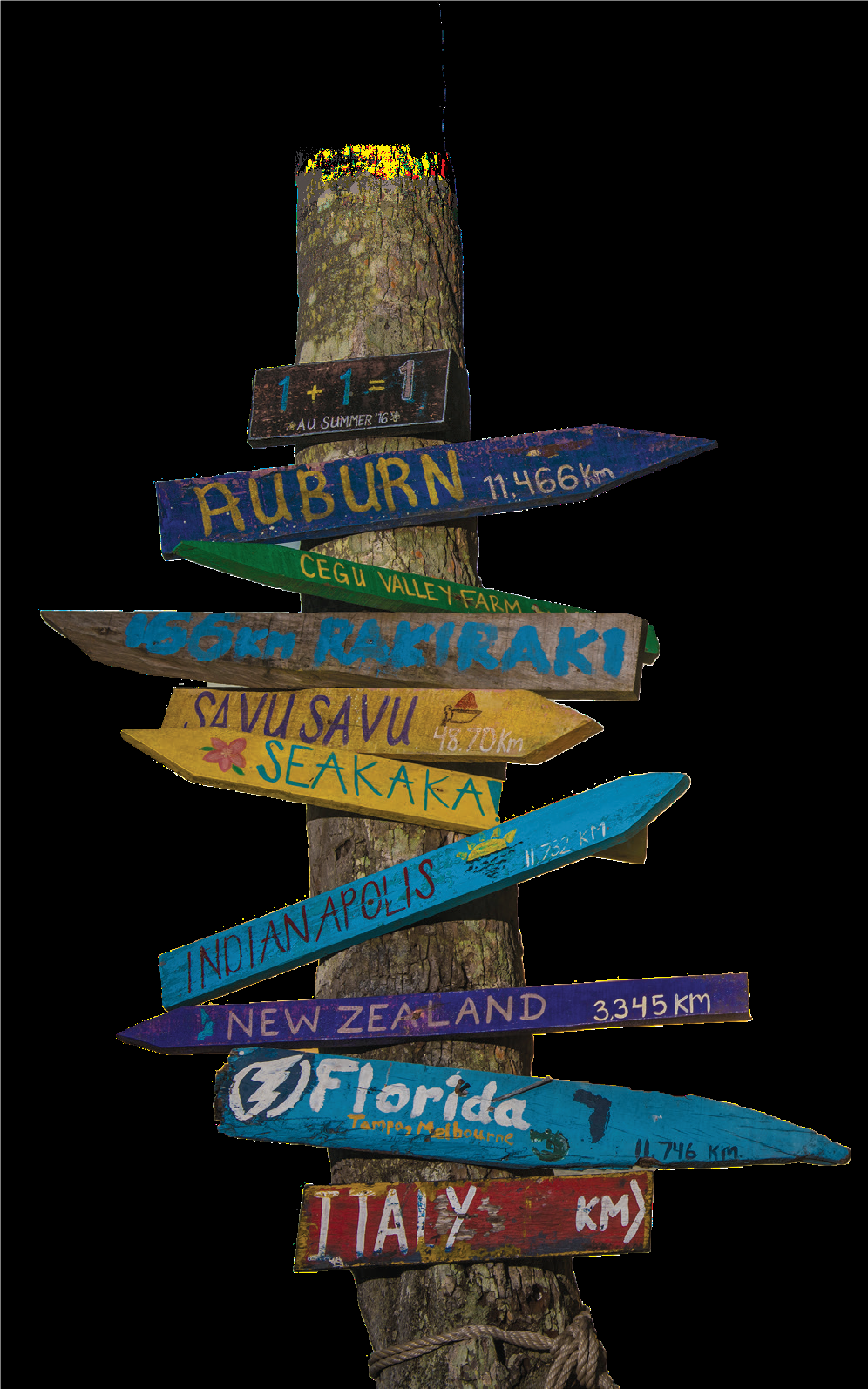
BIOMECHANICS AND ENGINEERING IN THE ARTS
People don’t typically associate engineering with the arts. Biomechanics and Engineering in the Arts is out to change that. Participants in this new study abroad offering from the Samuel Ginn College of Engineering head to Florence, Italy to learn the biomechanics, roots of ballet, opera, the symphony and even painting by exploring the lives and engineering influence of Leonardo Da Vinci and Giovanni Borelli, the father of biomechanics. eng.auburn.edu/global
JOSEPH S. BRUNO ITALY PROGRAM
You can’t talk Auburn study abroad options without mentioning the popular Joseph S. Bruno Italy program. Three months studying Italian art in a 15th-century palace in the Roman suburb of Ariccia? The College of Human Sciences tells students that their assignment is simple: “Experience everything.” By trip’s end, participants will have an international minor in human sciences. humsci.auburn.edu/global/studyabroad.php
SPAIN SEMESTER PROGRAM
Want to learn Spanish? Move to Spain. Students who take advantage of the College of Liberal Arts’ immersive Spain Semester Program in quaint Alcalá de Henares improve their language skills by living with host families on the outskirts of Madrid. Students study at the Universidad de Alcalá, which is located in a renovated 17th-century convent. cla.auburn.edu/forlang/study-abroad
THE ROLE OF FORESTS IN HUMAN LIVELIHOOD AND HEALTH IN AFRICA TRIP
A trip led by faculty in the College of Veterinary Medicine and the School of Forestry and Wildlife Sciences examines environmental health, public health, animal health and economic development in both South Africa and Madagascar. In addition to taking in stunning scenery, students pursue holistic, multidisciplinary solutions to problems that affect humans and animals. sfws.auburn.edu/student-life/study-abroad
Bret Holmes navigates the twists and turns of the racing world as a driver and an owner.
Stephanie Todd ’04 keeps your financial secrets safe at one of the world’s largest banks.
Combining faith and design, disaster response architect Sarah Elizabeth Dunn ’03 builds shelters for disaster-stricken communities around the world.
Bret Holmes navigates the twists and turns of the racing world as a driver and an owner.
Stephanie Todd ’04 keeps your financial secrets safe at one of the world’s largest banks.
Combining faith and design, disaster response architect Sarah Elizabeth Dunn ’03 builds shelters for disaster-stricken communities around the world.

We sat down with Mike McCay, director of The University Career Center at Auburn University and Addye Bucknell-Burnell, associate director, Career Development, to get their insight on landing the perfect job.
By Kate Asbury Larkin ’21
Networking
The Interview
Do your homework
Do not ask questions that only benefit yourself
Good questions to ask
Informational Interviewing
Seek out four to five companies or alumni you would like to sit down with to learn more. It doesn’t matter if the company doesn’t have any current job openings. Information interviews aren’t job interviews; they’re a time to introduce yourself, to get to know the company or industry and to show a genuine interest in the company.
Informational interviews can be beneficial for both the job seeker and the employer. When jobs do open, you’ll have already established a professional relationship.
Resume
Handshake
Career Fairs
Auburn-sponsored career fairs are open to all alumni. Alumni within five years of graduation can utilize the University Career Center for additional assistance. career.auburn.edu
Addressing hidden student hunger at Auburn.
Alumni around the world live The Auburn Creed in remarkable ways. Meet three who have dedicated their lives to making an impact on others by serving the underserved and giving hope to the hopeless.
What was your favorite concert you attended while a student at Auburn?
Addressing hidden student hunger at Auburn.
Alumni around the world live The Auburn Creed in remarkable ways. Meet three who have dedicated their lives to making an impact on others by serving the underserved and giving hope to the hopeless.
What was your favorite concert you attended while a student at Auburn?

Just in time for summer, these cocktail recipes from El Guapo Bitters, Tonics & Syrups are here to beat the heat. El Guapo is the subject of “Shaking Things Up.”
By Derek Herscovici ’14
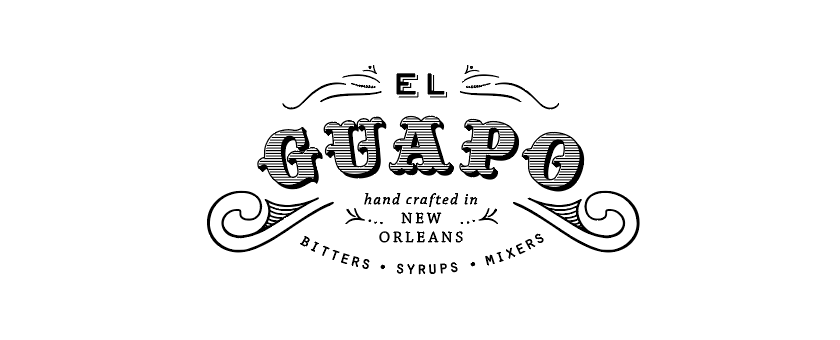
Just in time for summer, these cocktail recipes from El Guapo Bitters, Tonics & Syrups are here to beat the heat. El Guapo is the subject of “Shaking Things Up,” a profile of 2011 alumna Christa Cotton in the Summer 2020 issue of Auburn Magazine. The founder and CEO of New Orleans Beverage Group and owner of El Guapo Bitters, Tonics & Syrups, Cotton has earned widespread acclaim for her New Orleans-inspired cocktail line.
Made with locally sourced ingredients that are traceable to the farm level or third-party certified organic. El Guapo’s entire line is non-GMO, high fructose corn syrup free, gluten free and vegetarian, too.
Visit El Guapo’s website for their products and more recipes. Cheers!
Jungle Bird Milk Punch
Makes one cocktail
• 2 oz Zero Proof Clarified Milk Punch (recipe below)
• 2 oz white rum (we used Roulaison)
• 2 oz El Guapo® Spiced Pecan Syrup
• 1 T. El Guapo® Polynesian Kiss Bitters
• Edible or yard flowers, as garnish
In a clean shaker filled with ice, add clarified milk punch, rum, syrup, and bitters. Shake until well chilled. Strain into a low ball and serve up, using edible flowers or yard flowers as garnish. Cheers!
Holiday Old Fashioned (Featuring Good Food Award winning Chicory Pecan Bitters)
Makes one cocktail
• 3 oz bourbon (we used @13thcolony)
• .5 oz El Guapo® Spiced Pecan Syrup
• 8 dashes El Guapo® Holiday Pie Bitters
• 1 large rock
• 2 Luxardo cherries, yard flowers and leaves, to garnish
In a lowball, combine bitters, syrup & bourbon. Stir to combine & place one large rock in glass. Garnish with cherries & any other desired accoutrements. We chose yard flowers & a tropical leaf… because optimism.
Desert Island Margaritas
Makes 2 cocktails
• 2.5 oz Coconut Tequila (@1800tequila)
• 1 oz Triple Sec
• 1.5 oz guava purée
• 1.5 oz Pink Coconut Water (@harmlessharvest)
• 1.5 oz key lime juice
• 4 dashes El Guapo® Polynesian Kiss Bitters (@elguapobitters)
Rim glass with Lime flavored sugar using a lime wedge. Regular sugar works too! Add a few large cubes of ice. Pour all ingredients straight into glass, stir, squeeze in lime wedge and add it or discard, top with bitters.\
Rose Cordial Cocktail
Makes one cocktail
• 1.5 oz gin (Have you tried Wonderbird?)
• .74 oz El Guapo® Rose Cordial
• .5oz @lillet Blanc
• .5oz freshly squeezed lemon juice
• Topo Chico
• Dried rose petals (or rose petal tea!), for garnish
In a clean shaker filled with ice, add gin, cordial, Lillet & juice. Shake until well chilled. * strain into a collins glass. Top with Topo Chico & garnish with dried rose petals.
Pro tip: you can find dried rose petals in some loose-leaf teas as well as sold as an individual garnish!
Sweet & Sour Citrus Martini
Makes one cocktail
• 1 oz El Guapo® Lemon Cordial
• 1 tsp El Guapo® Cuban Bitters
• .5 oz freshly squeezed Meyer lemon juice
• .5 oz freshly squeezed orange juice
• .5 oz vodka (we used St. Roch, but any quality vodka will do)
• Sugar, Meyer lemon peel or yard flowers, for garnish
In a shaker filled with ice, combine Lemon Cordial, bitters, juices & vodka. Shake until well chilled. Rim a martini glass in sugar (rim with water first to help sugar adhere) before straining liquid into the glass. Garnish with a Meyer lemon peel or yard flowers before serving.
Pro tip: For a more prominently bitter martini, add a tablespoon of Cuban bitters as opposed to a teaspoon.
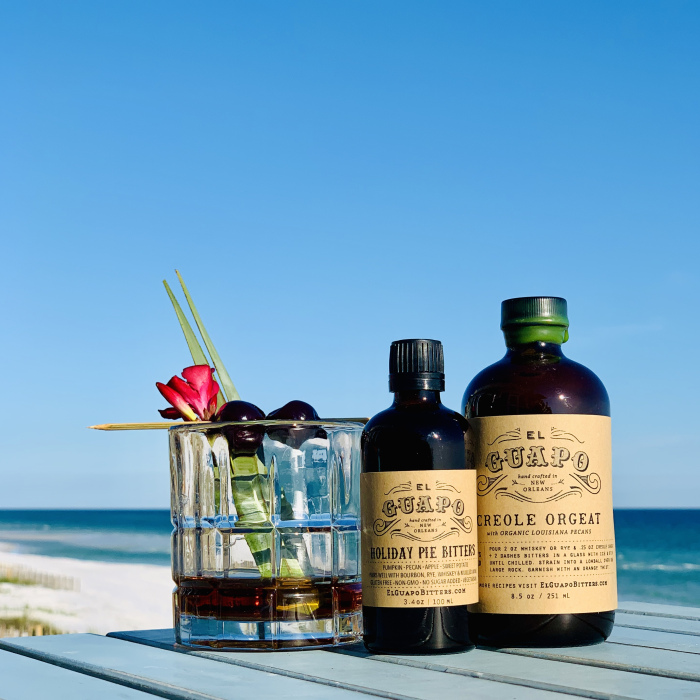
Bret Holmes navigates the twists and turns of the racing world as a driver and an owner.
Stephanie Todd ’04 keeps your financial secrets safe at one of the world’s largest banks.
Combining faith and design, disaster response architect Sarah Elizabeth Dunn ’03 builds shelters for disaster-stricken communities around the world.
Bret Holmes navigates the twists and turns of the racing world as a driver and an owner.
Stephanie Todd ’04 keeps your financial secrets safe at one of the world’s largest banks.
Combining faith and design, disaster response architect Sarah Elizabeth Dunn ’03 builds shelters for disaster-stricken communities around the world.